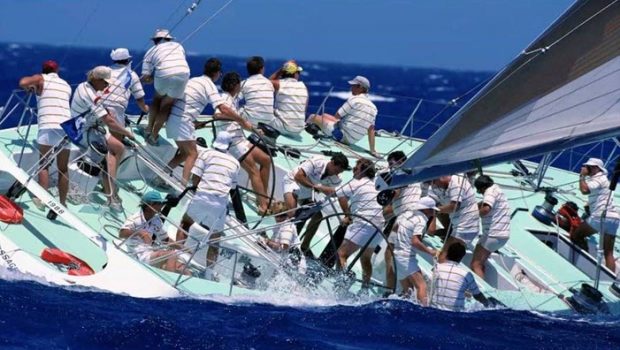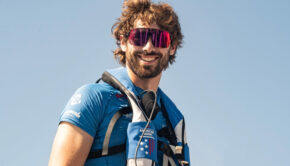America’s Cup: Real Boats, More Sailors
Published on April 1st, 2021
America’s Cup defender Emirates Team New Zealand and their club, Royal New Zealand Yacht Squadron, alongside the Challenger of Record for the 37th America’s Cup (AC37), the Royal Yacht Squadron Racing (GBR) represented by INEOS TEAM UK, have agreed to terms for the next match in 2024.
“The Royal New Zealand Yacht Squadron is pleased to present a format, alongside our British colleagues, which will be welcomed by sailing enthusiasts worldwide,” said Aaron Young, RNZYS Commodore.
Bertie Bicket, Chairman of Royal Yacht Squadron Racing, added, “This direction reconnects the America’s Cup with its history, and ensures that older guys like INEOS TEAM UK Skipper and Team Principal Sir Ben Ainslie can remain onboard for successive events.”
Recognizing how the America’s Cup had been hijacked since 2007 by pro sailors that like going fast, and television network executives chasing the Red Bull fan, terms of the Protocol will include the following:
• Use boats that can showcase the many skills required by athletes in this complex sport to race a modern, planing monohull, including sailors serving on the bow or mast, as grinders, tailers, helm, tactician, and/or strategist and navigator.
• Maintain the “Majesty” of America’s Cup yachts while maintaining a connection with—and passing on technological advances to—boats used by almost all of the rest of the sport
• Limit costs to attract numerous challengers and defense candidates worldwide.
• Make sailing in the Cup a realistic goal for the very best of young sailors and match racers everywhere, whether or not they are, or intend to become professional sailors.
• End, the “circular” reasoning: “Why is a Cup campaign so expensive?” Because of the technology.” “Why do you need such exotic technology?” “To attract commercial sponsors.” “Why do you need that level of commercial sponsorship?” “Because a Cup campaign is really expensive!”
• Appeal to the type of billionaires that would prefer to race more J-Class boats alongside the 2017 edition in Bermuda than competing teams for the Cup.
“I’m thrilled with this announcement,” shared Terry Hutchinson, Skipper & Executive Director of American Magic. “I most certainly was to be forced off the boat for the next edition, and now I can stay onboard and show I’m more than just a grey-haired grinder.”
Here are the key elements for the 37th America’s Cup:
The Boats
75-80 foot planing monohulls built to a “box” rule (like that used for TP52s), fractional rigs with asymmetrical spinnakers, canting keels whose maximum cant must result in the bulb remaining underwater. The boats will have a useful life after each campaign.
Nationality Rule
A “sliding” nationality rule whereby countries with significant America’s Cup and “Maxi Boat” experience will be required to have 100% of the crew as citizens or permanent residents, the latter with at least five years of such status; other countries with less such experience would have a somewhat lesser percentage requirement.
Campaign Limit
Fifteen months from the splash of the first boat of a campaign until the first day of the Cup Match. No “World Series” matches without assurance of a net $0 additional cost to campaigns.
Home Waters
Challenger Series and Cup Match must be held in the home waters of the defending Club or where it holds its annual regatta.
A Mutually Agreed Upon Salary Limit
Reduce campaign costs and encourage new challengers by limiting the total amount paid for salaries of team members and administrators. This is routinely done and enforced in professional sports. Necessarily, financial information will be required from challenger and defender candidates
Rationale for the Plan
• While foiling boats are exciting, that part of the sport will undoubtedly continue to grow but as far as “passing down” technology, there is little that would be useful for boats used by the vast majority of sailors worldwide as was the case when the Cup was sailed in non-foiling monohulls.
• In fact, match racing is only exciting when the boats are engaged with—and in close proximity to—each other. A fleet race with the current boats would likely be more “exciting”, but would be either pretty dangerous and/or rules adopted which keep them way from each other which sort of defeats the purpose—and in any event, the America’s Cup is and should be a match race.
• Embrace the proven excitement of pre-starts with two maxi boats just a few feet from each other. Recognize the excitement of 12-15 person crew maneuvering in tactically close race – spinnaker hoists and douses, gybe sets,etc.
• Accept that sailing will never be a “mass market” sport. Given that, the theme is no longer to let the “tail wag the dog” and change the rules, technology, crew requirements, race course sizes, etc. to somehow make it so.
• Rather than trying to attract great numbers of non-sailor spectators to an audience, the focus is on attracting and making it realistic for more sailors on the bow, mast, sewer, etc. who are good enough to aspire to actually sail in the America’s Cup.
• Return the America’s Cup to the progression of match racing events in the sport. From youth events to World Match Racing Tour events, it is the intent of the Defender and Challenger of Record for the America’s Cup to be that final and greatest rung of the ladder.










 We’ll keep your information safe.
We’ll keep your information safe.